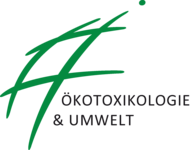Waterborne and diet-related effects of inorganic and organic fungicides on the insect leaf shredder Chaetopteryx villosa (Trichoptera).
Aquatic toxicology (Amsterdam, Netherlands). Bd. 206. 2019 S. 33 - 42
Erscheinungsjahr: 2019
Publikationstyp: Zeitschriftenaufsatz
Doi/URN: 10.1016/j.aquatox.2018.10.021
| Geprüft: | Bibliothek |
Inhaltszusammenfassung
It is well-documented that fungicides can affect crustacean leaf shredders via two effect pathways, namely waterborne exposure and their diet (i.e., via dietary uptake of fungicides adsorbed to leaf material and an altered microorganism-mediated food quality). As a consequence of different life history strategies, the relevance of these effect pathways for aquatic shredders belonging to other taxonomic classes, for instance insects, remains unclear. Therefore, we investigated waterborne and d...It is well-documented that fungicides can affect crustacean leaf shredders via two effect pathways, namely waterborne exposure and their diet (i.e., via dietary uptake of fungicides adsorbed to leaf material and an altered microorganism-mediated food quality). As a consequence of different life history strategies, the relevance of these effect pathways for aquatic shredders belonging to other taxonomic classes, for instance insects, remains unclear. Therefore, we investigated waterborne and diet-related effects in larvae of the caddisfly leaf shredder Chaetopteryx villosa (Insecta: Trichoptera) and compared our observations to previous reports on effects in adults of the crustacean leaf shredder Gammarus fossarum (Malacostraca: Amphipoda). We assessed acute waterborne effects of an organic fungicide mixture (OFM) and the inorganic fungicide copper (Cu) on the leaf consumption (n=30) of the fourth-/fifth-instar larvae of C. villosa and their food choice (n=49) when offered leaf material, which was either conditioned in presence or in absence of the respective fungicide(s). Moreover, the larval leaf consumption (n=50) and physiological fitness (i.e., growth as well as lipid and protein content) were examined after subjecting C. villosa for 24 days towards the combination of both effect pathways at environmentally relevant concentrations. G. fossarum and C. villosa exhibited similar sensitivities and the same effect direction when exposed to the OFM (either waterborne or dietary pathways). Both shredders also showed the same effect direction when exposed to dietary Cu, while with regards to mortality and leaf consumption C. villosa was less sensitive to waterborne Cu than G. fossarum. Finally, as observed for G. fossarum, the combined exposure to OFM over 24 days negatively affected leaf consumption and the physiology (i.e., growth and lipid reserves) of C. villosa. While no combined Cu effects were observed for larval leaf consumption, contrasting to the observations for G. fossarum, the physiology of both shredders was negatively affected, despite partly differing effect sizes and directions. Our results suggest that C. villosa and G. fossarum are of comparable sensitivity towards waterborne and diet-related organic fungicide exposure, whereas the trichopteran is less sensitive to Cu-based waterborne fungicide exposure. However, when both pathways act jointly, organic and inorganic fungicides can affect the physiology of shredder species with completely different life history strategies. As caddisflies represent a subsidy for terrestrial consumers, these observations indicate that fungicide exposure might not only affect aquatic ecosystem functioning but also the flux of energy across ecosystem boundaries. » weiterlesen» einklappen
